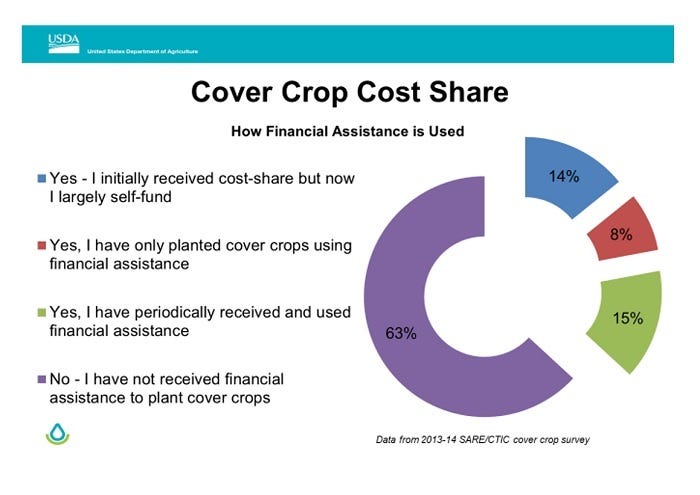February 3, 2020

Most of this nation’s agricultural subsidies and supports were designed in the name of protecting our resources while keeping our producers solvent and maintaining a constant food supply.
The result has been subsidies, government payments, cost-share disaster payments, ethanol subsidies and common public welfare programs. These now include CSP, CRP, ARC, PLC, RCPP, CIG, EQIP, and many other acronyms and names in the massive farm bill and the taxpayer money that pays for it.
Most farmers -- including myself -- have been involved one way or another in these programs, which date to the 1930s. The government has been involved in agriculture for over 90 years but at what price to both producer and consumer? For example, do we have healthier food? Are farmers and/or ranchers more successful and profitable? Have we improved the environment? Who are the true beneficiaries of these programs?
I plan to address each of these questions over the next few weeks to consider the pros and cons of having our government involved so heavily in agriculture.
The first thing I want to touch on is environmental concerns. Many farm programs are peddled under the guise of protecting the environment. While I do think there are practices offered that help, the enormity of the overall problems to solve paint a much bigger picture. While I believe some programs directly benefit the environment (cover crops, buffers) others are much more questionable (terraces, ethanol subsidies and bioreactors).
As many of the practices move away from the simple and more toward complicated and expensive engineered structures they can cost as much as $1,500 per acre to install and can have limited lifespans.
Here are some questions I believe can help us look honestly at these: Does paying for terraces allow land that is too steep to be farmed? What if there are no soil health practices installed on these terraced lands after completion? Do they really keep soil and its nutrients in place and out of the waterways? Do they provide the best cost-to-benefit for the environment? What should be the true intent of environmental cost share?
It is my belief any farm program should provide the lowest cost for the biggest benefit for the most acres covered, and with the intent that the producer will willingly continue practices that provide the same protection without cost share. They should also help improve the economic bottom line for the producer.
Cost share is an incentive to get producers to install some type of conservation practice. But again, we should ask some tough questions: Of all the different types of practices we cost share, how many of these producers install similar practices on their own without cost-share? How many terraces are built without cost share? How many bioreactors are built without cost share? How many sediment basins are built without cost share?
The majority of NRCS-recommended practices are expensive to build and maintain and we have taught producers, and the public the only way to get conservation on the land is to pay for it at a big expense
So, if that is true can we pay for all the conservation that is needed in the country today? Look at the example below provided by Doug Peterson, NRSC soil health specialist for Iowa and Missouri.
Missouri has 7 million acres of cropland
Half is in annual crops and needs erosion control
2012 data shows average soil loss at 12 tons/acre/year
Terraces have been heavily promoted and accepted
Terraces cost - 3.5 million acres x $1,200 per acre
Therefore $4.2 billion to treat those acres
Therefore $40 million per year of cost share
Using 100% of all EQIP plus Missouri state funding it would take 105 years to treat all cropland.
Below is a graph with cover crops and how they are adopted after cost share. They can also be implemented for as low as $15 per acre with much bigger benefits.
We owe the taxpayers the most protection for the least cost their tax dollars continue to be used. We are stewards of the environment, whether we get cost share or not. However, I want to reiterate that if we get taxpayer money, it should be utilized in the best way possible.

The opinions of the author are not necessarily those of Beef Producer or Farm Progress.
You May Also Like




